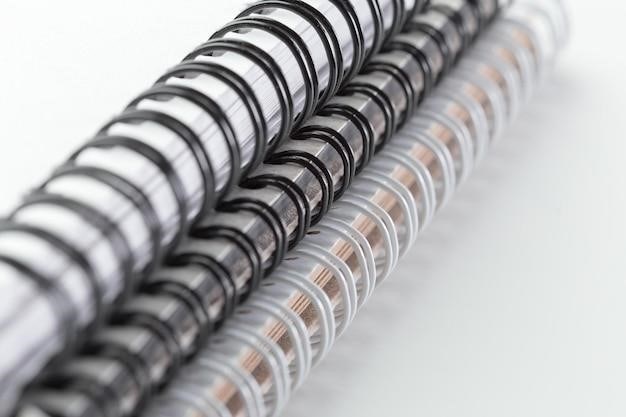
Flange Binding⁚ A Comprehensive Guide
Discover the art of flange binding, adding a pop of color and professional flair to your quilts. This guide provides step-by-step instructions, fabric selection tips, pressing techniques, and troubleshooting advice. Downloadable PDF tutorials are also available for easy reference. Enhance your quilting skills today!
Understanding Flange Binding
Flange binding elevates quilt finishing, transforming a simple border into a striking design element. Unlike traditional binding, which uses a single fabric strip, flange binding incorporates two⁚ a main binding fabric and a contrasting flange fabric. This creates a subtle yet impactful “piping” effect between the binding and the quilt’s edge. The flange, typically a slightly wider strip, is neatly encased within the folded binding, adding visual depth and texture. The result is a polished, professional finish that enhances the overall aesthetic appeal of the quilt. Various techniques exist for creating flange binding, each offering unique advantages. Some methods involve pre-sewing the binding and flange strips together before attaching them to the quilt, while others advocate for attaching the flange after the main binding is secured. The choice depends on personal preference and desired outcome. Regardless of the method, precise cutting, sewing, and pressing are crucial for achieving a clean, even finish. Understanding these nuances empowers quilters to confidently incorporate flange binding into their projects.
Fabric Selection and Cutting
Choosing the right fabrics is paramount for successful flange binding. The main binding fabric should complement the quilt’s overall design, while the flange fabric offers a chance for creative contrast. Consider using a solid color for the binding to create a clean, defined edge, or a subtle print to add a touch of visual interest. The flange fabric allows for more playful experimentation⁚ a bold print, a contrasting texture, or even a metallic fabric can add a unique flair. Accurate cutting is crucial. The provided internet examples suggest using different widths for the binding and flange, such as 1 3/8 inches for the binding and 1 5/8 inches for the flange, to achieve the desired effect. However, these dimensions can be adjusted based on personal preference and the overall scale of the quilt. Ensure both strips are cut on the straight grain to prevent stretching or distortion during sewing and pressing. Pre-washing fabrics is highly recommended to prevent shrinkage after the quilt is completed. Precise measurements and careful attention to detail during cutting are key to creating a professional-looking flange binding.
Sewing the Binding and Flange
With your fabrics carefully cut, the next step involves precisely sewing the binding and flange together. Begin by placing the right sides of the binding and flange fabrics together, aligning the long edges. A 1/4-inch seam allowance is generally recommended, ensuring a neat and even seam. Use a walking foot on your sewing machine for consistent feeding of the fabric layers, especially if working with different fabric weights or textures. Once sewn, carefully press the seam open to create a flat, even surface for the next steps. Some tutorials suggest pressing the seam towards the main binding fabric, creating a subtle definition between the binding and flange. Others recommend pressing the seam allowance towards the flange, which can result in a more pronounced, piped effect. Experimentation is encouraged to determine which pressing method best complements your fabric choices and aesthetic preferences. Pay close attention to maintaining a consistent seam allowance throughout the process, ensuring a professional and polished final look. The method of joining the ends of the binding strips to create one continuous length (often a mitered join) is detailed in many online flange binding tutorials.

Pressing Techniques for Flange Binding
Proper pressing is crucial for achieving a crisp, professional-looking flange binding. The method you choose significantly impacts the final appearance. Some quilters press the seam allowance of the binding and flange towards the main binding fabric, creating a subtle, almost invisible flange. This technique minimizes bulk and results in a clean, understated finish, ideal for delicate fabrics or intricate quilt designs. Alternatively, pressing the seam allowance towards the flange creates a more defined, piped effect. This method adds visual interest and works well with bolder fabrics and quilt styles. Regardless of your chosen method, ensure your iron is set to the appropriate temperature for your fabrics, avoiding scorching or damage. Use a pressing cloth to prevent shine and protect delicate fibers. Pressing should be done carefully and consistently along the entire length of the binding to ensure a uniform appearance. For sharp corners, consider using a tailor’s ham or point turner to achieve a crisp, well-defined mitered corner. Pay attention to the details; even small variations in pressing can impact the overall look of your finished quilt.
Attaching the Flange Binding to the Quilt
Attaching the flange binding involves a slightly different approach compared to traditional binding. Begin by laying the prepared flange binding along the quilt’s raw edge, with the flange facing outwards, ensuring the raw edges align. Secure the beginning of the binding using a few loose stitches or pins. Stitch the binding to the back of the quilt using a 1/4 inch seam allowance. This allows the flange to remain visible on the quilt’s front when folded over. Pay close attention to maintain a consistent seam allowance throughout, especially around the corners. Use a mitering technique to neatly navigate the corners, ensuring a clean and precise finish. Once the binding is sewn to the back, fold it over to the front, aligning the raw edges. Stitch in the ditch, close to the seam line, to secure the binding in place. This creates a professional finish, hiding the raw edges and emphasizing the contrast between the binding and the flange. For extra security, hand-stitch the final section of the binding to create a neat and durable finish. This step may be optional depending on your preference and the fabric’s resilience. Remember to use a matching thread for the final stitching to maintain visual harmony.
Mitering Corners with Flange Binding
Mitering corners with flange binding requires a slightly different approach than traditional binding. The extra layer of the flange adds complexity, but with careful technique, you can achieve a beautiful, professional finish. First, carefully measure and cut your binding and flange strips to the appropriate length for each side of the quilt. When approaching a corner, do not cut the binding. Instead, continue sewing past the corner by about one inch. Rotate the quilt a quarter turn and fold the binding strip to create a 45-degree angle, ensuring the raw edges are aligned. Press the seam allowance of the binding open, aligning the raw edges to maintain a crisp corner. Next, continue stitching along the adjacent side of the quilt. Repeat this process for each corner. Ensure to use a consistent seam allowance to maintain evenness throughout. After completing all corners, fold over the flange binding to the front of the quilt, and stitch in the ditch, close to the seam line, to secure it. This will create a neat, mitered corner without bulkiness. Proper mitering results in clean, sharp corners, showcasing the contrast of the flange and binding fabrics effectively. Practice on scraps before tackling your final quilt to improve your technique and ensure confidence.
Finishing Touches and Variations
Once your flange binding is attached, several finishing touches can elevate your quilt’s appearance. Consider using a decorative stitch along the edge of the binding to add a touch of elegance. A subtle topstitching line, either following the seam line or slightly offset, can enhance the visual interest and provide extra security. Experiment with different thread colors to coordinate with your quilt’s design or create a bold contrast. Alternatively, you can leave the stitching minimal and rely solely on the contrasting fabrics to create a visually appealing finish. For a more rustic look, hand-stitch the binding to the back of the quilt using a blind stitch, concealing the stitches for a clean and professional look. The flange itself offers opportunities for customization. Consider using a contrasting fabric for the flange to create a striking visual effect, or opt for a fabric that complements the main quilt colors for a more subtle approach. You can also incorporate different textures or patterns into the flange, allowing for creative exploration. Experiment with different widths of the flange and binding to find a combination that suits your personal preference. Remember, the finishing touches are the final opportunity to make your quilt truly unique and reflective of your personal style. Don’t be afraid to experiment and find what works best for you.
Free Tutorials and PDF Resources
Numerous online resources offer free tutorials and downloadable PDF patterns for creating flange binding. Websites dedicated to quilting often feature detailed, step-by-step instructions with accompanying photos or videos. These resources frequently provide different approaches to flange binding, catering to various skill levels and preferences. Some tutorials focus on specific techniques, such as mitering corners or using fusible thread to simplify the process. Others provide comprehensive guides that cover every aspect of creating and attaching flange binding. Many free PDF downloads offer printable instructions and diagrams, making it easier to follow along during the creation process. These PDFs often include templates or guides to help with accurate fabric cutting and seam allowance measurements. Searching for “flange binding tutorial PDF” or “free flange binding instructions” on the internet will yield a wide variety of results. Remember to check the credibility of the source and the clarity of the instructions before beginning your project. Utilizing these free resources can significantly enhance your understanding and success in creating beautiful, professional-looking flange binding for your quilts.
Troubleshooting Common Issues
While flange binding enhances quilt aesthetics, certain challenges might arise. Uneven seams can result from inaccurate fabric cutting or inconsistent sewing. Precise measurements and careful attention to seam allowances are crucial to avoid this. Difficulty in mitering corners might stem from insufficient fabric or improper folding techniques. Practice on scrap fabric before working on your quilt. Bulky flange binding can occur if the seam allowances aren’t pressed correctly, or if too much fabric is used. Pressing techniques are vital; ensure seams are flat and the flange lays smoothly. Inconsistent flange width might be due to uneven fabric cutting or stretching during sewing. Use a rotary cutter and cutting mat for precise cuts; gently handle the fabric to minimize stretching. If the flange binding appears loose or puckered, it could indicate insufficient stitching or improper alignment. Check your stitch length and ensure the binding is properly attached to the quilt. Finally, if the flange binding doesn’t match the quilt fabric perfectly, review your fabric choices and ensure color coordination. Online tutorials and forums provide valuable support for resolving these issues, offering solutions and tips for achieving a flawless finish.


